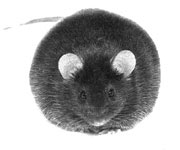GENE(SIS)
Henry Art Gallery, University of Washington 543-2280, $6 11 a.m.-5 p.m. Tues.-Wed., Fri.-Sat.; 11 a.m.-8 p.m. Thurs. ends Sun., Aug. 25
IN THE RENAISSANCE, artists were crazy for science. Leonardo was exceptional but not alone in combining portraiture and geometry, sculpture and physics, garden design and hydrodynamics. Generations of painters mastered the math required to create the illusion of three dimensions on their canvases by means of the new theory of perspective. And when they weren’t putting the science of their time into practice, they delighted in devising visual metaphors to illustrate the latest scientific and philosophical notions, usually in the form of episodes from the strenuous love lives of Greek and Roman gods.
Science and art went their separate ways during the religious and dynastic conflicts of the next few centuries, and, despite some early flirtations with speed and technology as themes, most contemporary artists tend to look at science as an enemy of humanity, and themselves as defenders of our collective soul.
“Gene(sis)” is an example of a new and fascinating phase in the ongoing science-art dialectic. A joint project of the Henry and the Berkeley Art Museum, it is, in the words of its organizers, a “response to the accelerated pace of genetic research and the potential sociocultural impact of recent scientific developments on people’s daily lives.” The exhibit “seeks to bridge art and science while showcasing powerful new artwork created in direct response to the Human Genome Project, and cultivating important public dialogue.”
God knows such dialogue is overdue. But one might reasonably question whether an art gallery’s the best place to begin it. It’s hard to see how the show filling the Henry’s South Gallery is going to have any impact on debates about cloning, genetic profiling, or any other issue posed by the Human Genome Project, because there’s no evidence that the artists involved have a more sophisticated view of the subject than the average reader of the National Enquirer.
The crude view of science behind these works wouldn’t matter if they were worth looking at in their own right; Marsilio Ficino’s theory of triplexes has turned out to be a lot of windy nonsense, but in Botticelli’s hands it produced the Primavera. But the artists on view here haven’t managed to transmute their notions into something worth regarding on its own.
If you don’t trudge through the interminable placards of text posted with the works, you wouldn’t know why most of them were on display in the first place. I� Manglano-Ovalle offers a wall full of cheerfully colorful linear Cibachrome blobs. The text tells us they’re derived from the autoradiographs used by genetic analysts to sort batches of related DNA into distinguishable subsets. Pardon me, but so what? Similarly, Joan Fontcuberta offers huge blowups of bioforms reminiscent of the imagery of his Catalan namesake Joan M��. They turn out to be smears of dried blood extracted from Fontcuberta’s relatives. And the point of this would be . . . ?
At least the wall card tells us why we should look harder at Orit Raff’s big, serene expanses of off-white fabric or enamel—for the almost invisible hair or a nail clipping; they’re intended to express the artist’s anxiety that wherever we go, we leave behind us genetic detritus which in the future might make us vulnerable to all kinds of invasive investigation. Or something.
The vacuity of all these big, bland snapshots makes Catherine Chalmers’ equally gigantic photo-portraits of genetically manipulated mice look like war reporting, even though the aesthetic is more Richard Avedon than Robert Frank. This is what a mouse tweaked to exhibit obesity looks like; this is how one with the triple-sex chromosome defect we call Down’s Syndrome appears. What we’re expected to feel looking at these yard-square images is unclear; that we’re expected to feel something is obvious. And something’s better than nothing, isn’t it?
Nothing is what you get from Jill Reynolds’ room-filling installation Family Tree II, which is not only incomprehensible to the eye but also so ugly you don’t even want to read the text that might explain what she meant by it. The three “multimedia” projects with rooms of their own are like grotesquely enlarged science-fair projects from a middle school for the severely unbalanced. All three exemplify a new twist on artists’ age-old struggle to make the invisible visible: These guys spare themselves effort by telling the viewer what to imagine they did, had they bothered to do it.
The best thing in this show by far has exactly nothing to do with the theme of the exhibition. Daniel Lee’s suite of digital portraits represents animal spirits that make up the court which judges the newly dead in Chinese Taoist folklore. Lee’s life-sized manipulated images can stand with those of other masters of the grotesque like Bosch and Daumier, but he doesn’t share their satirical intent. The cats and hounds and bulls staring out of these transformed human faces are thoroughly animal but anything but bestial. They radiate intelligence and a profound gravitas. If only contemporary artists took their tasks as seriously as these spirits take theirs.








